The Box and Goodies -
The box is pretty much standard fare for the ROG line up. You have the VERY red color with the sunburst graphic. The name is in slightly reflective material (which is a pain to photograph) and to top things off, you get a nice banner telling you this is a B3 stepping board (this was a very big deal when the board came out). Under the front flap you have a window that lets you marvel at the board underneath. I have to say that no matter how they have performed Asus has almost always built some nice looking boards. 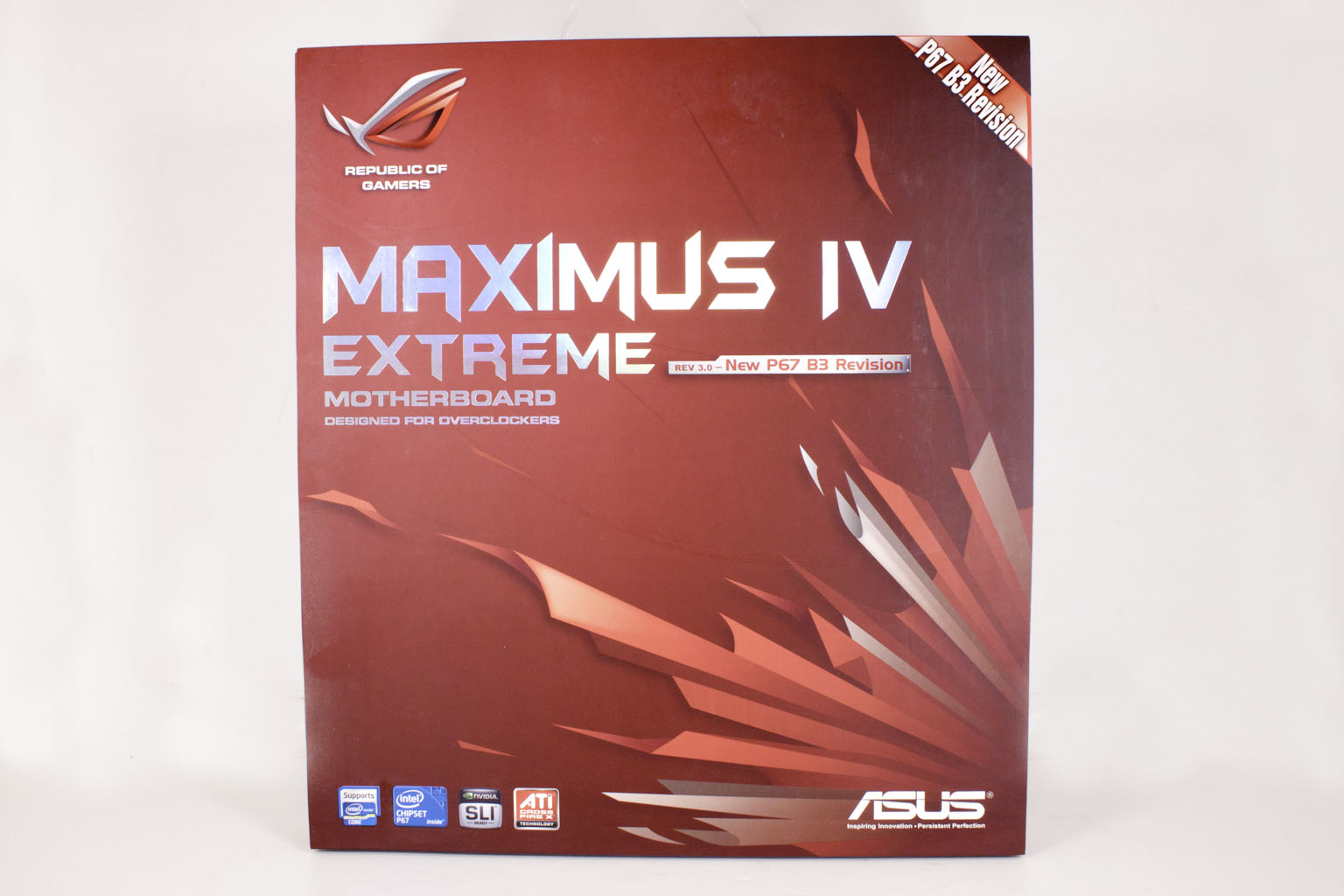
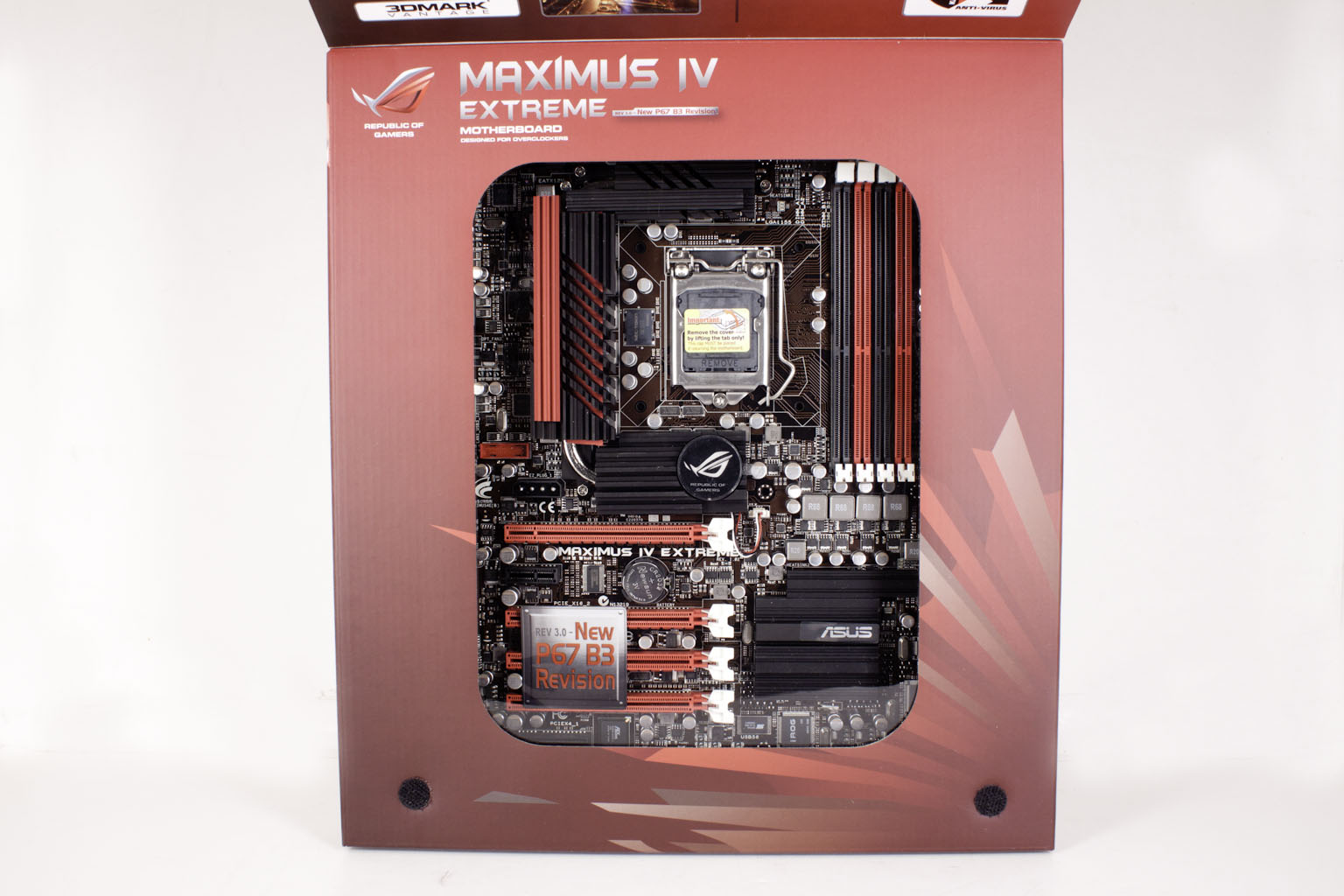 |
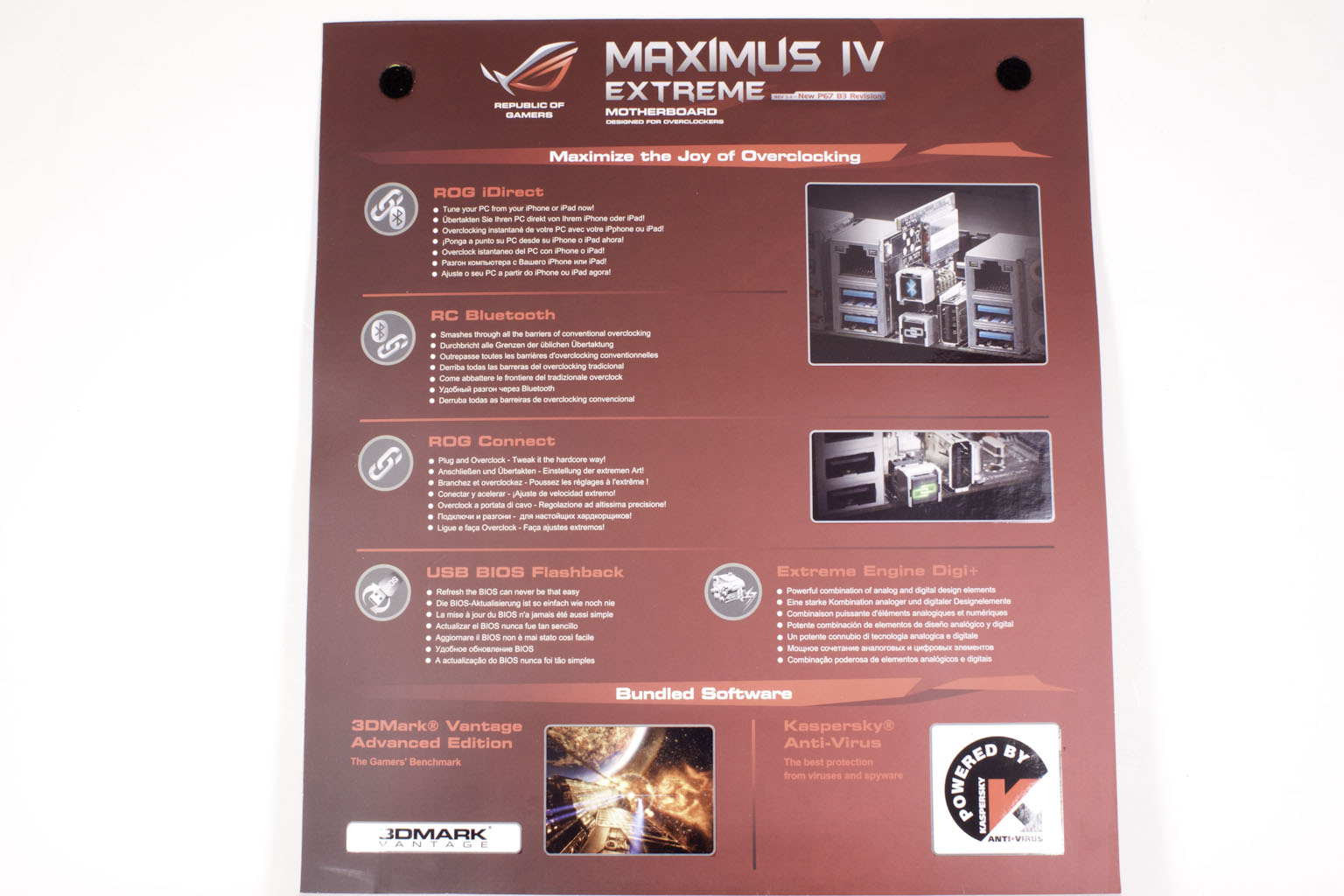 |
If you can pull your eyes away from the board under that plastic pane, then you might notice some additional marketing material. Here is a list (a small list I must add) of features that you can expect to get when you pick up the Maximus IV Extreme. These are mostly features aimed at the overclocking crowd, but they are still great features that are limited to the ROG Line. 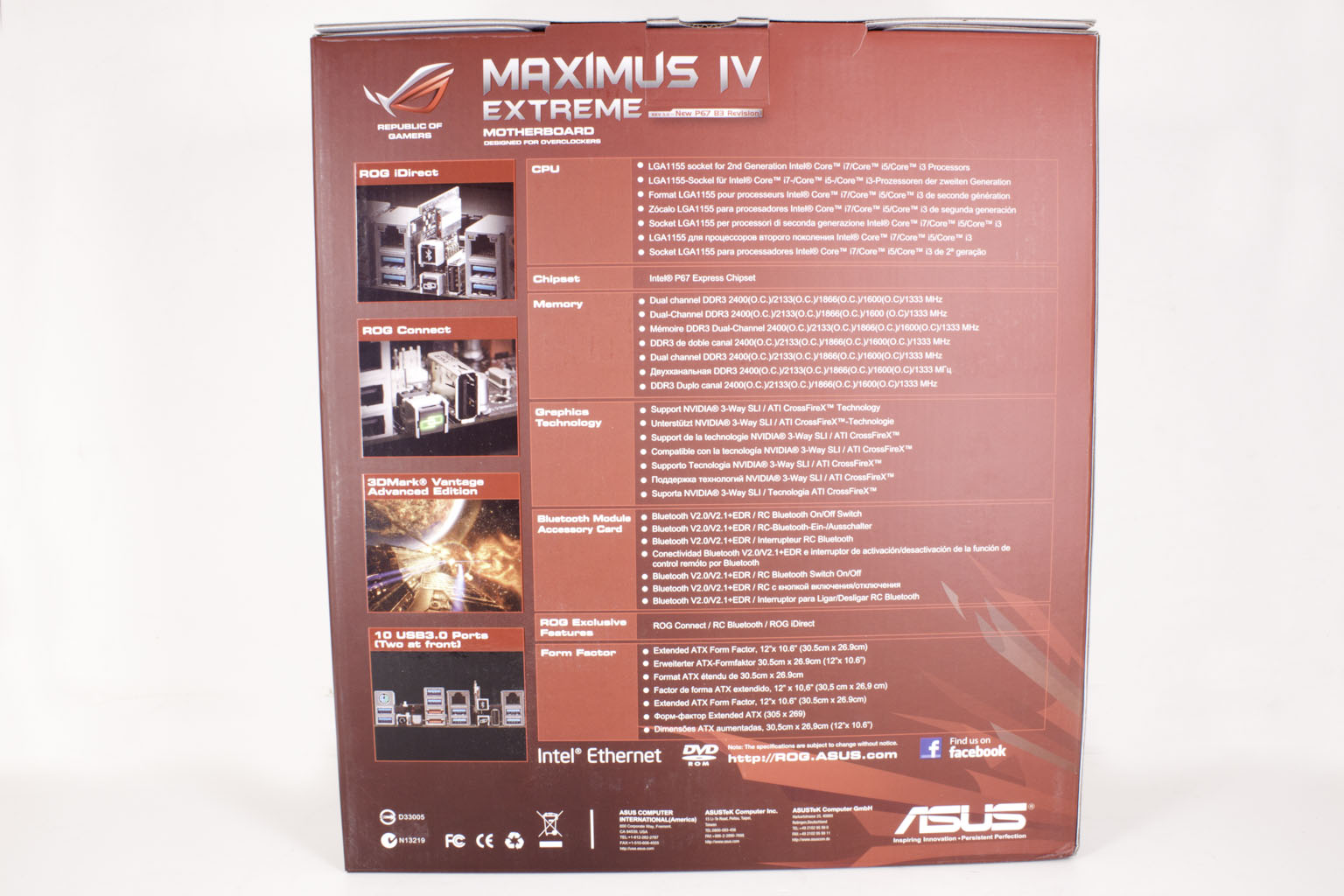
The back of the box gives you the specification list in seven languages plus a small recap of features you get with the Maximus IV Extreme. 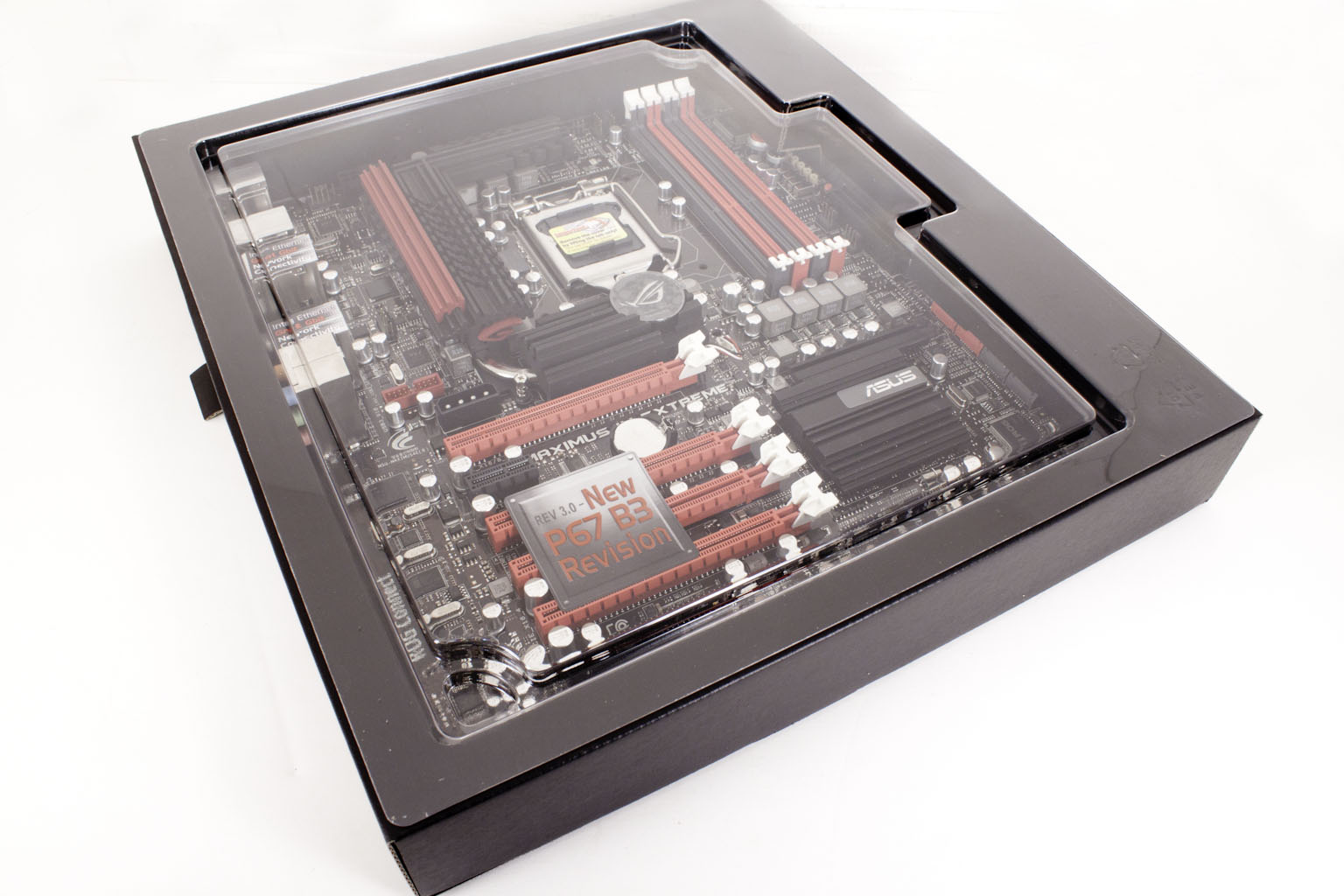
Once you get over all of that you will want to dig in and get the MIVE (Maximus IV Extreme) out as soon as you can. When you do you will find that Asus is sticking to what works; you get a box for just the motherboard and a box for all of the stuff that they throw in.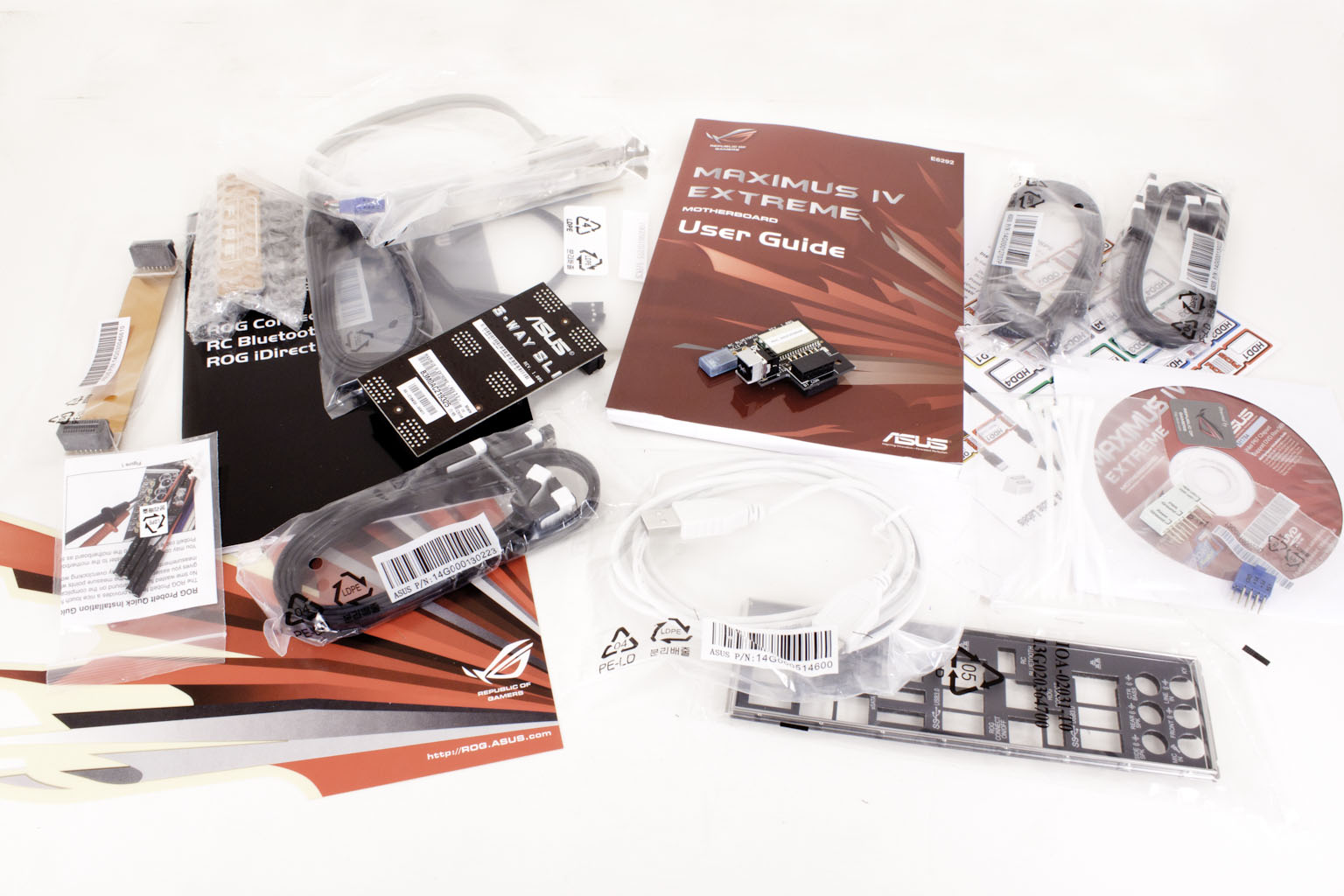
The important bits are easy to spot in the image below, but if you look closely you will see some of the extras that Asus puts in. These really round out the product and bring a lot more to the table than many people talk about. I am talking about the Voltage extension cables, the high-quality SATA cables, the labels for your drives and the I/O shield with the padding to not only help prevent cuts, but to make sure you do not distort it too bad when you put in place in the case you picked out.
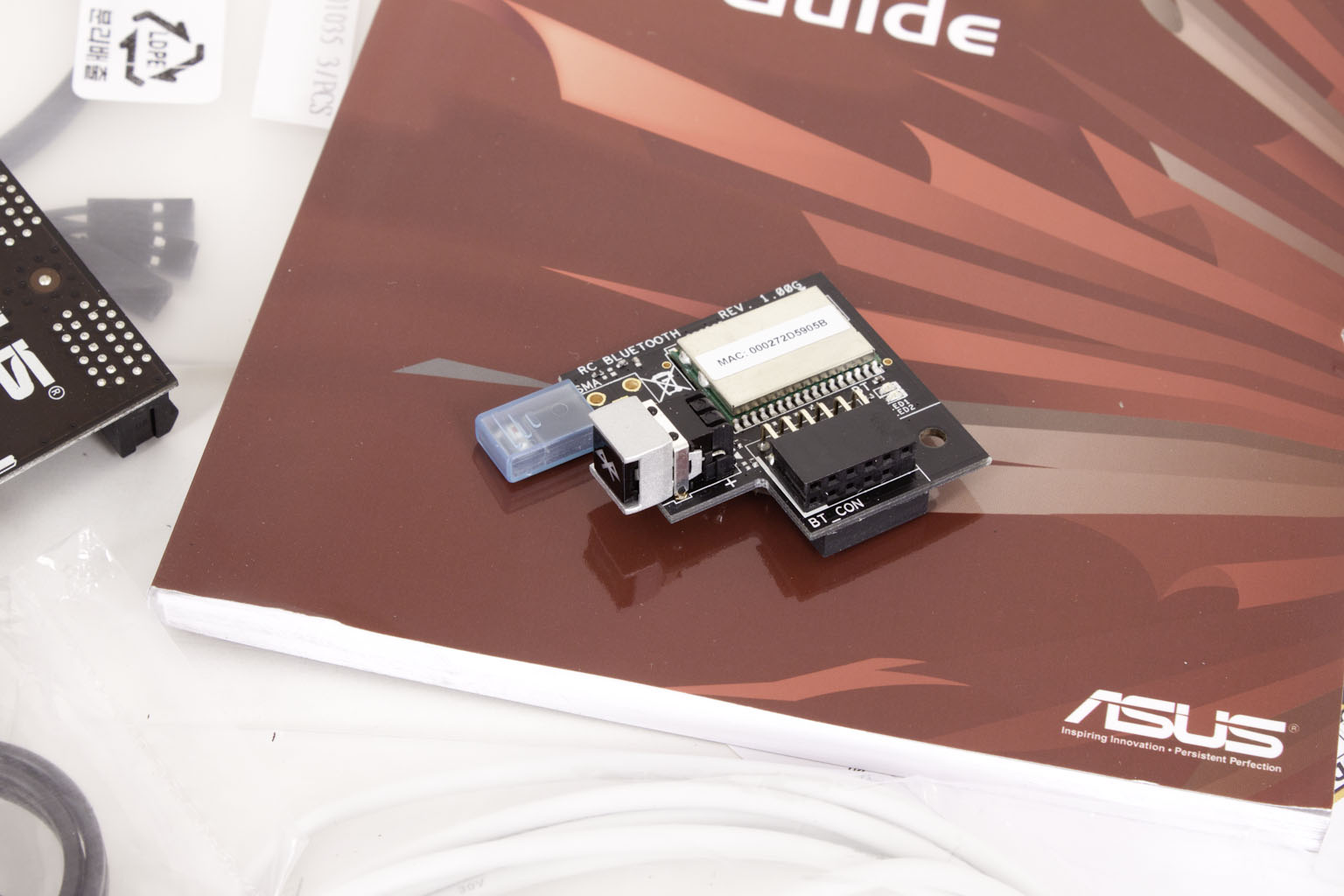 |
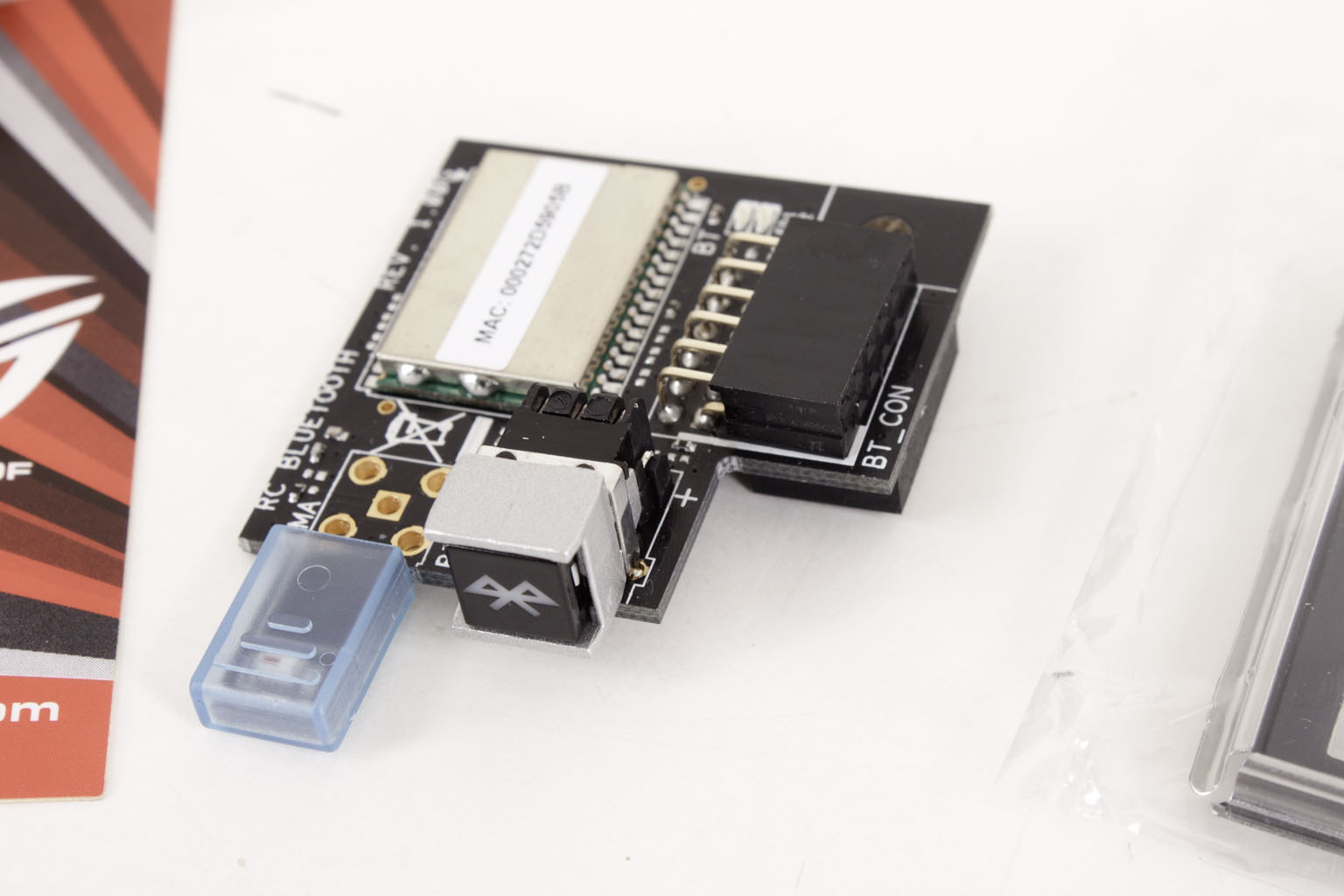 |
As with all of the other ROG boards the Maximus IV Extreme comes with a Bluetooth module that not only lets you connect things like keyboards and mice, but you can use to overclock (with the right phone OS).
The Layout -
The layout of any motherboard is important. Even simple mistakes in component placement or the signal traces can cause major issued in performance and stability. With the ATX form factor we find that this is even truer; the devices we drop onto them demand more and cleaner power while the signal speeds push faster and faster. Like we said, Asus can build-em pretty. Looking over the Maximus IV Extreme the style is unmistakable. From the red and black coloring (that ASRock did use on one board) to the distinctive style of the heatsink (complete with powder coating). 
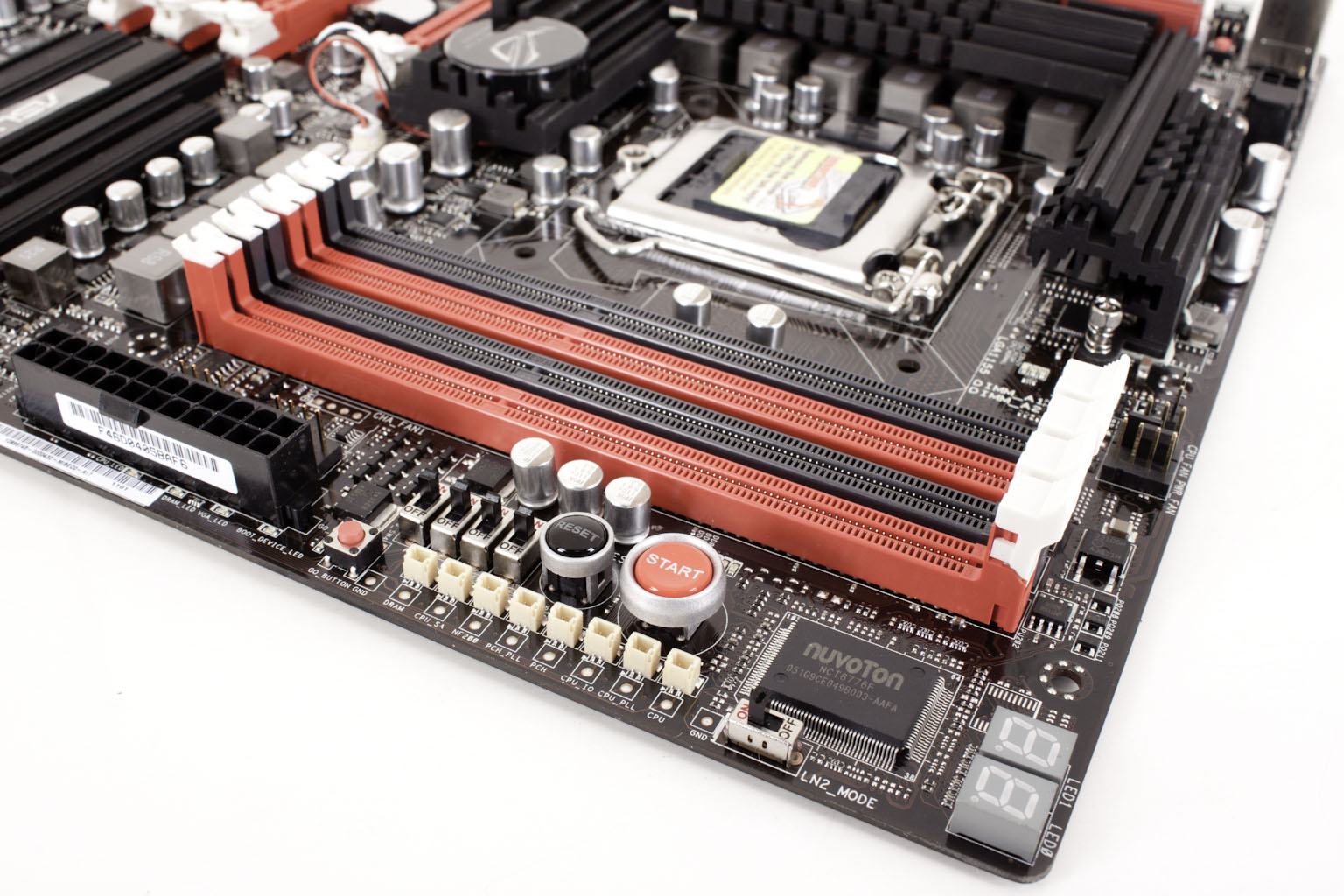 |
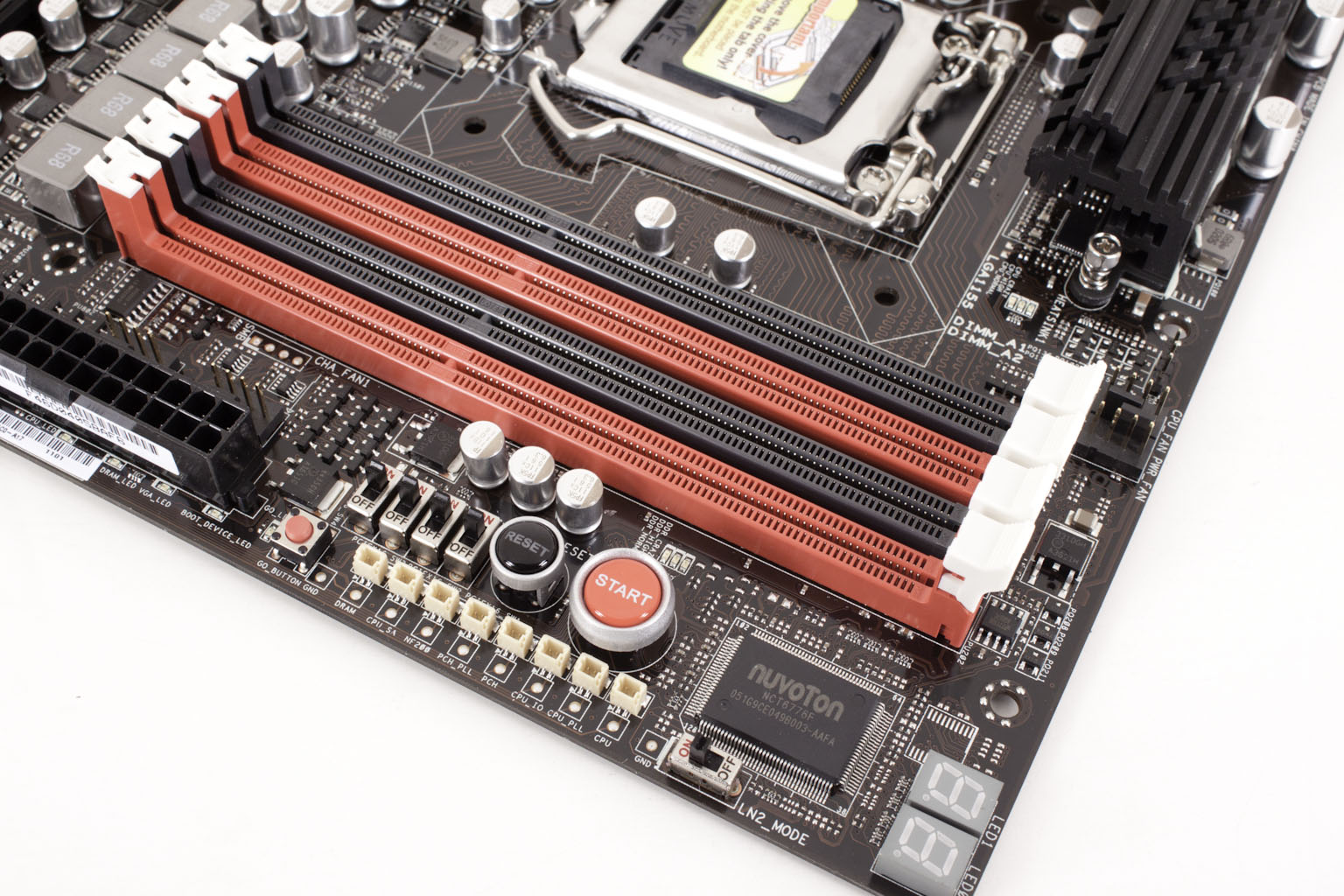 |
Looking things off at our normal starting point we find the now familiar ROG controls. You get the large and sturdy start and reset buttons, the PCIe one/off switches, the voltage read points, a dual Diagnostic LED, the Go_Button, and an LN2 mode switch. TheLN2 switch is something of a kick start to help you get things going when the board is too cold. Another item (again one that often goes unnoticed) is the very precise trace tuning to the memory slots. It is most visible in the second shot above. This type of tuning will usually bode very well for a motherboard, especially one that is intended for overclocking.
 |
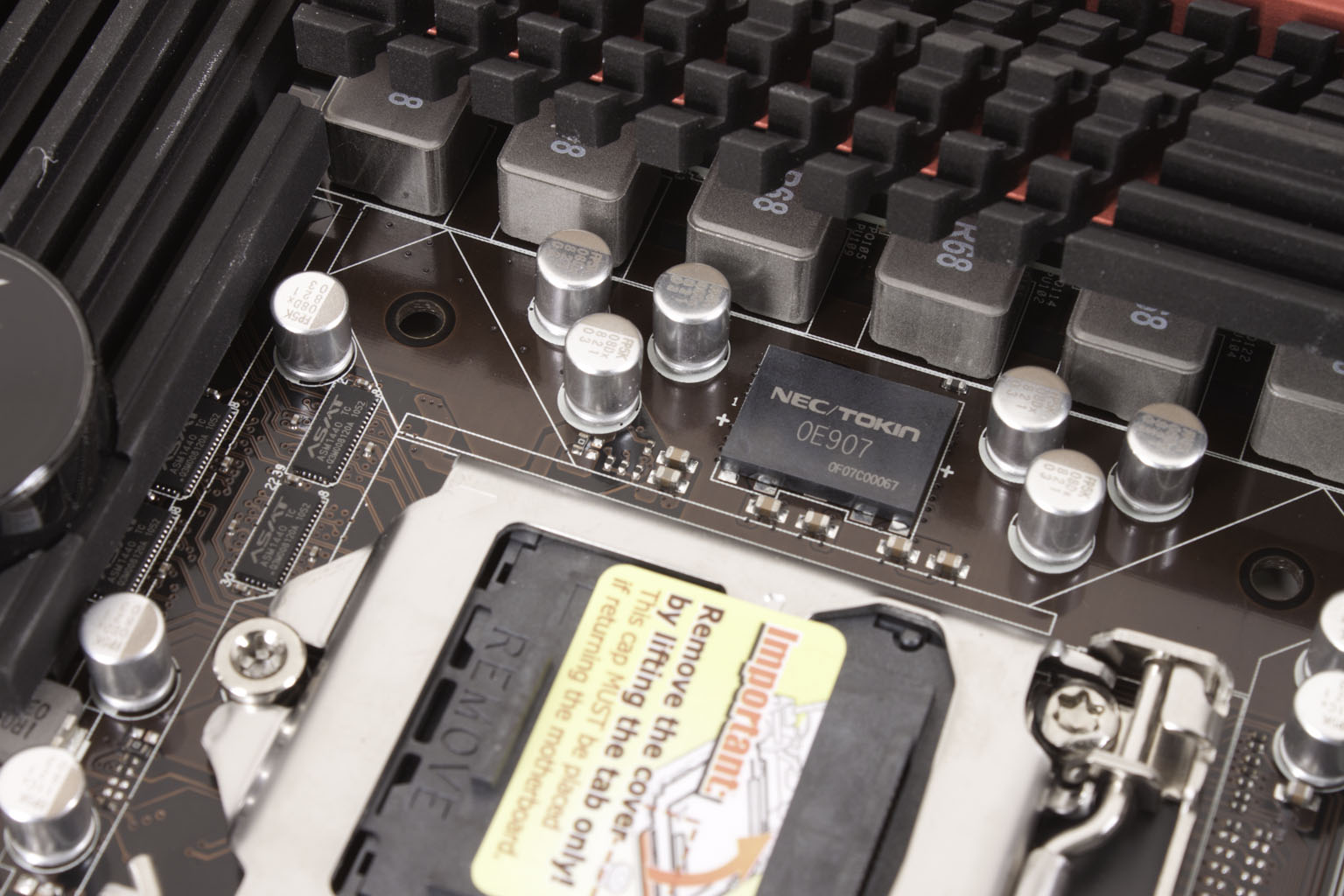 |
Another item that will usually indicate good performance is a well laid out power regulation area. ON the Maximus IV Extreme you get just that. The caps are well spaced as are the chokes. The voltage regulators are under the main mass of the heatsink. The design here allows the air from the CPU fan to push up and through the cooling which means you have even more surface area to transfer heat. It is a nice design choice. Another nice design choice is the NEC/TOKIN 0E907 Proadlizer (I am not kidding) capacitor. This cap replaces one of my favorite things about the early ROG designs; the FPCAP. The Proadlizer (which stands for prompt broadband stabilizer) is a new method for reducing the noise that is generated in power systems as their speeds increase. The Proadlizer also reduces the footprint of traditional decoupling circuits by replacing the multiple caps and ICs needed to keep up with the rapidly increasing frequencies that CPUs are running at. With this on the board we can’t wait to see what kind of clocks we can get. 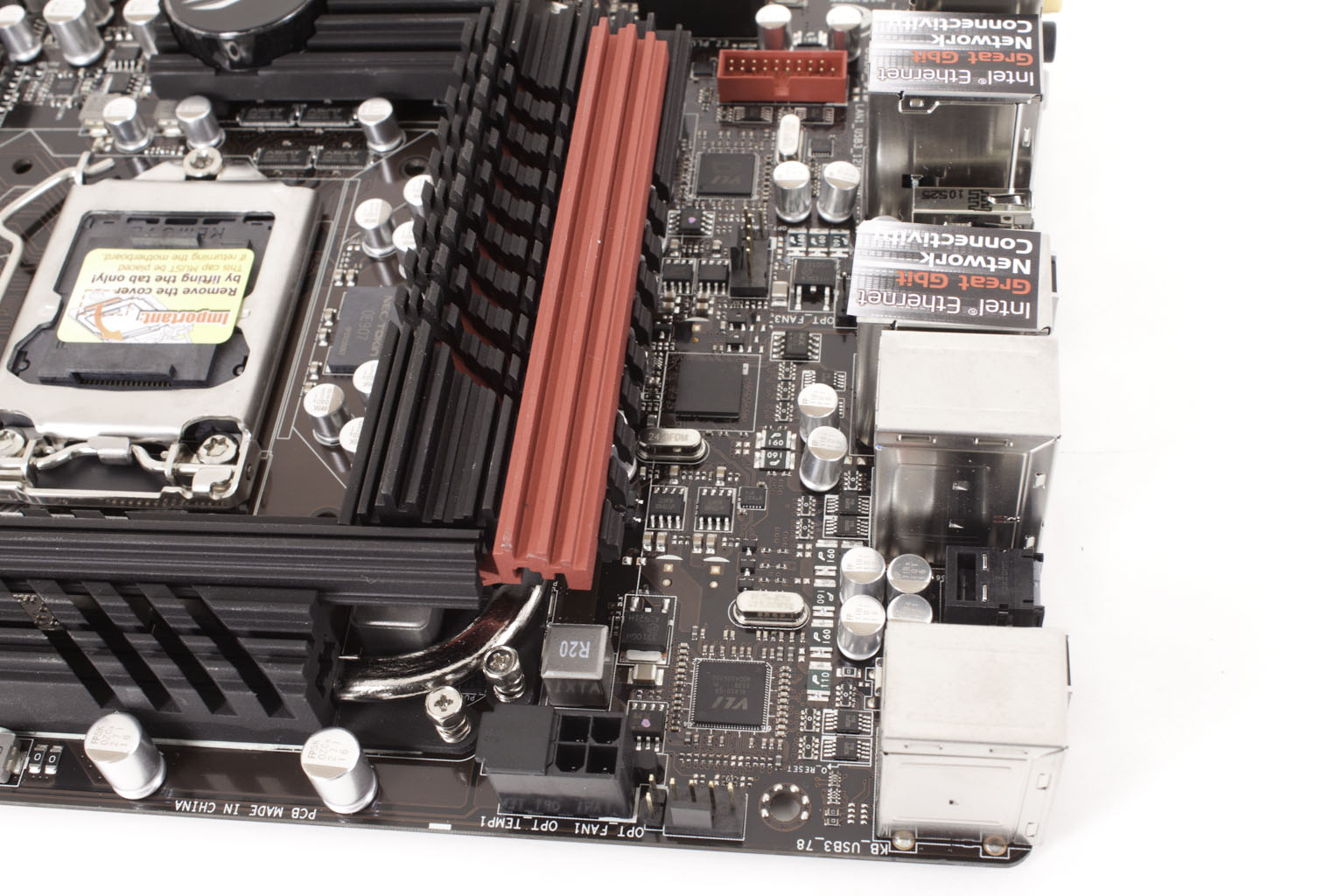
Moving on to more mundane items we find the “no-man’s” land between the VRMs and the I/O ports. Here we find the single 8-pin Aux connector and… a couple of interesting items. If you look closely you will be able to make out the USB 3.0 controller (most likely NEC) and a pair of chips labeled VLI. These are actually USB 3.0 port hubs (not replicators) made by VIA. They allow you to take two USB 3.0 ports and turn them into 8. Each hub chip can turn a single USB 3.0 port into four. It is how you end up with so many USB ports on the back. It is a great decision by Asus, even if the USB 3.0 market is still gearing up. Asus also has thrown in a full USB 3.0 header back here next to a 4-pin Molex connector. If you look closely you can also make out the Intel NIC controllers (another good design choice).
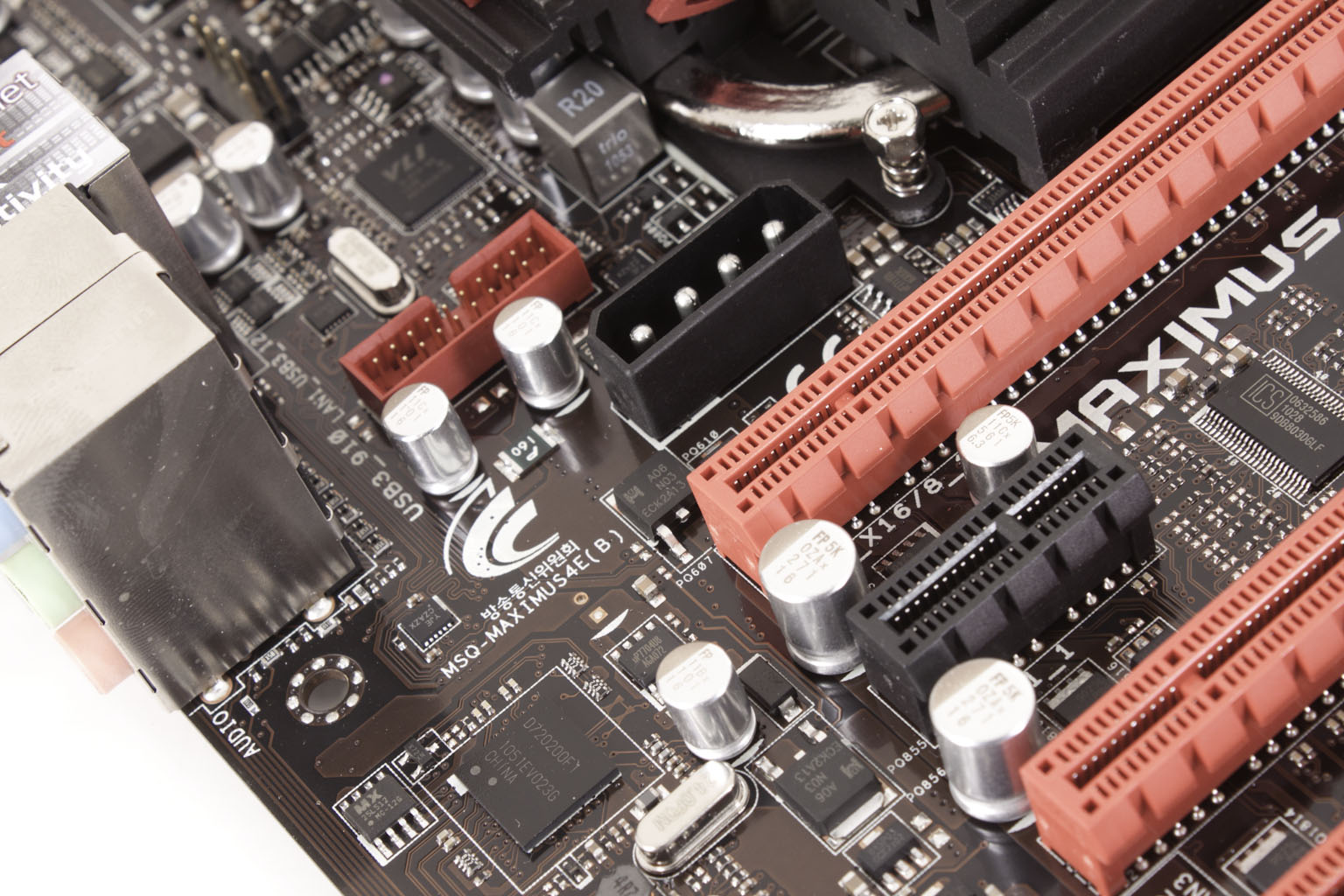 |
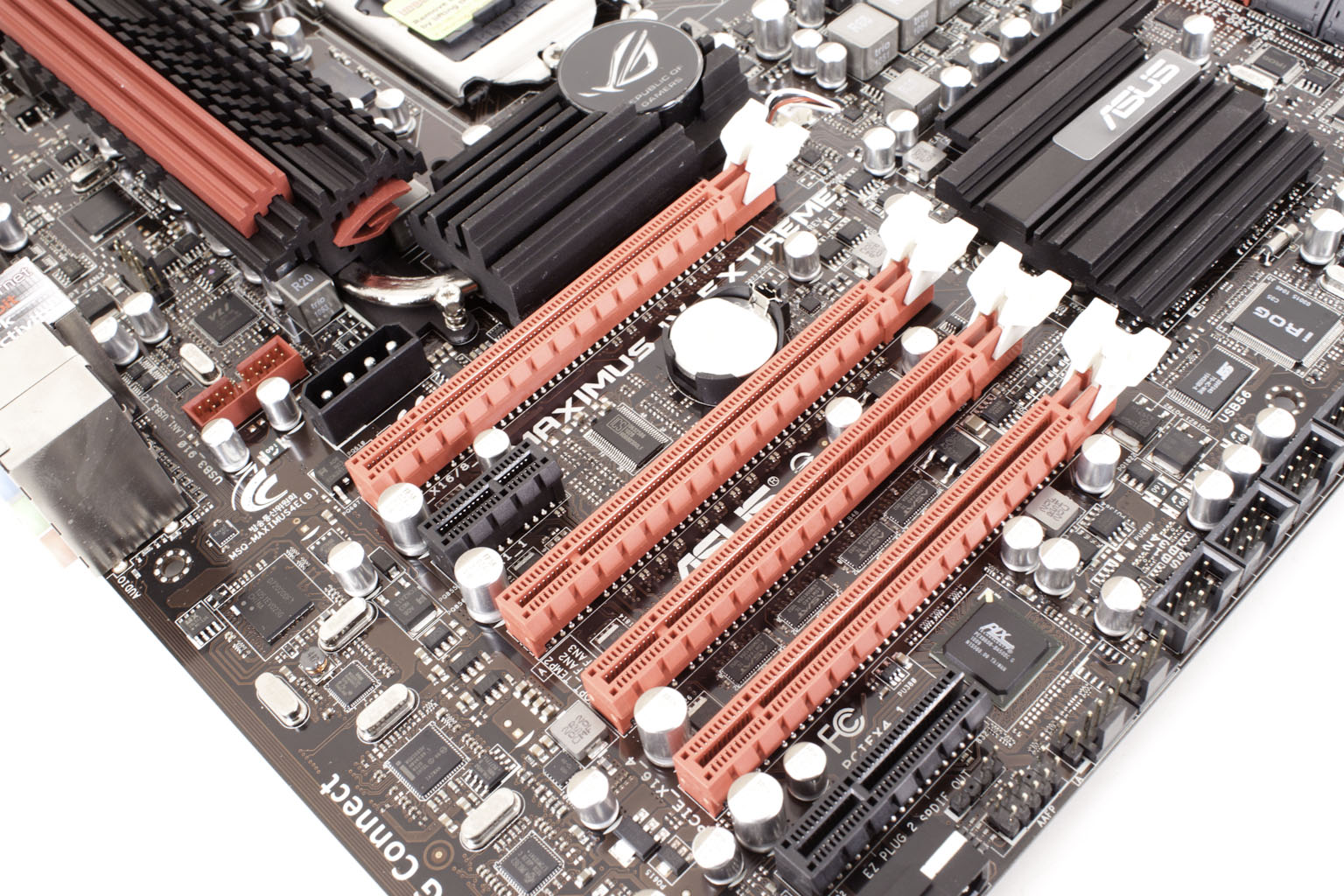 |
Moving down to the lower half we find four PCIe slots. The question is (as always) which ones are x16 and which are not. The typical 1155 CPU has a total of 16 PCIe Gen 2.0 lanes. This would normally mean all you are getting is a single x16 and 2 x8 if you run dual GPUs. On the Maximus things are a little different. If you are going for a single GPU you should use PCIe x16 slot 1. With two GPUs you will use slots 1 and 3 If you are using three (for dual x8), if you are moving up to three GPUs then you change things up completely and run slots 1, 2 and 4. This turns out to be x8 for slot one and x16 in BOTH slots 2 and 4. The extra lanes come from a NF200 chip that Asus has thrown in. Not a bad deal really.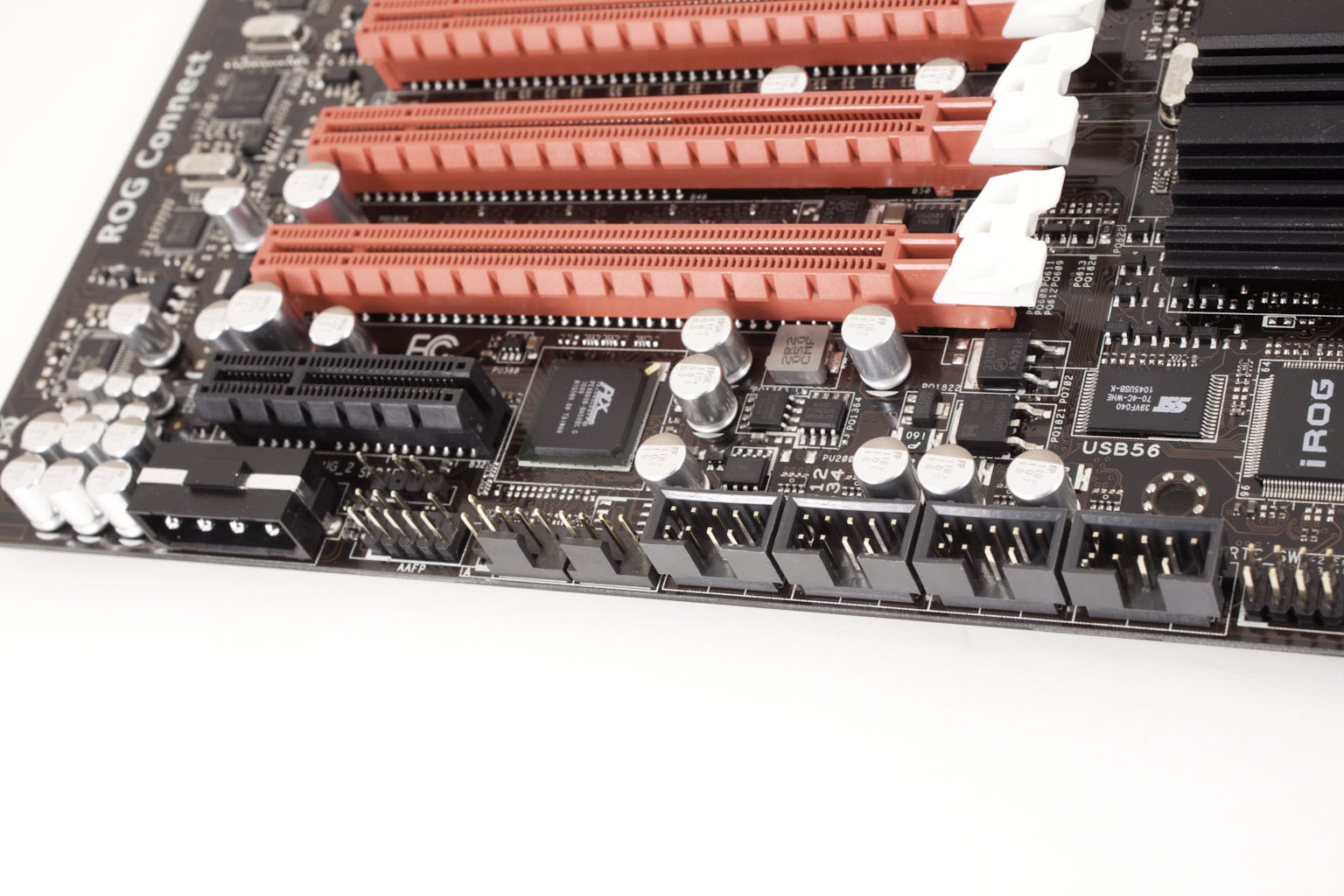 Taking a look at the bottom edge of the board we find the PLX Bridge that Asus brought into the game with the 1156 motherboards and has carried over to the P6x line up. This simple little chip helps to bring in extra PCIe Gen 2.0 lanes for items like the SATA 3.0 and USB 3.0 controllers that Asus has loaded up the Maximus IV Extreme with. Moving around to the front edge we find a pair of BIOS chips that are always handy to have on an enthusiast board not only can it help you get back up and running if you screw up, but it can let you setup different performance profiles. The Maximus has also doubled up on the number of SATA 3.0 ports that many boards bring to the table. Usually you get six SATA 2.0 and two SATA 3.0. Here Asus loads you up with four and four. It is a nice touch especially now that so many SSDs are coming with Sandforce SATA 3.0 controllers.
Taking a look at the bottom edge of the board we find the PLX Bridge that Asus brought into the game with the 1156 motherboards and has carried over to the P6x line up. This simple little chip helps to bring in extra PCIe Gen 2.0 lanes for items like the SATA 3.0 and USB 3.0 controllers that Asus has loaded up the Maximus IV Extreme with. Moving around to the front edge we find a pair of BIOS chips that are always handy to have on an enthusiast board not only can it help you get back up and running if you screw up, but it can let you setup different performance profiles. The Maximus has also doubled up on the number of SATA 3.0 ports that many boards bring to the table. Usually you get six SATA 2.0 and two SATA 3.0. Here Asus loads you up with four and four. It is a nice touch especially now that so many SSDs are coming with Sandforce SATA 3.0 controllers.
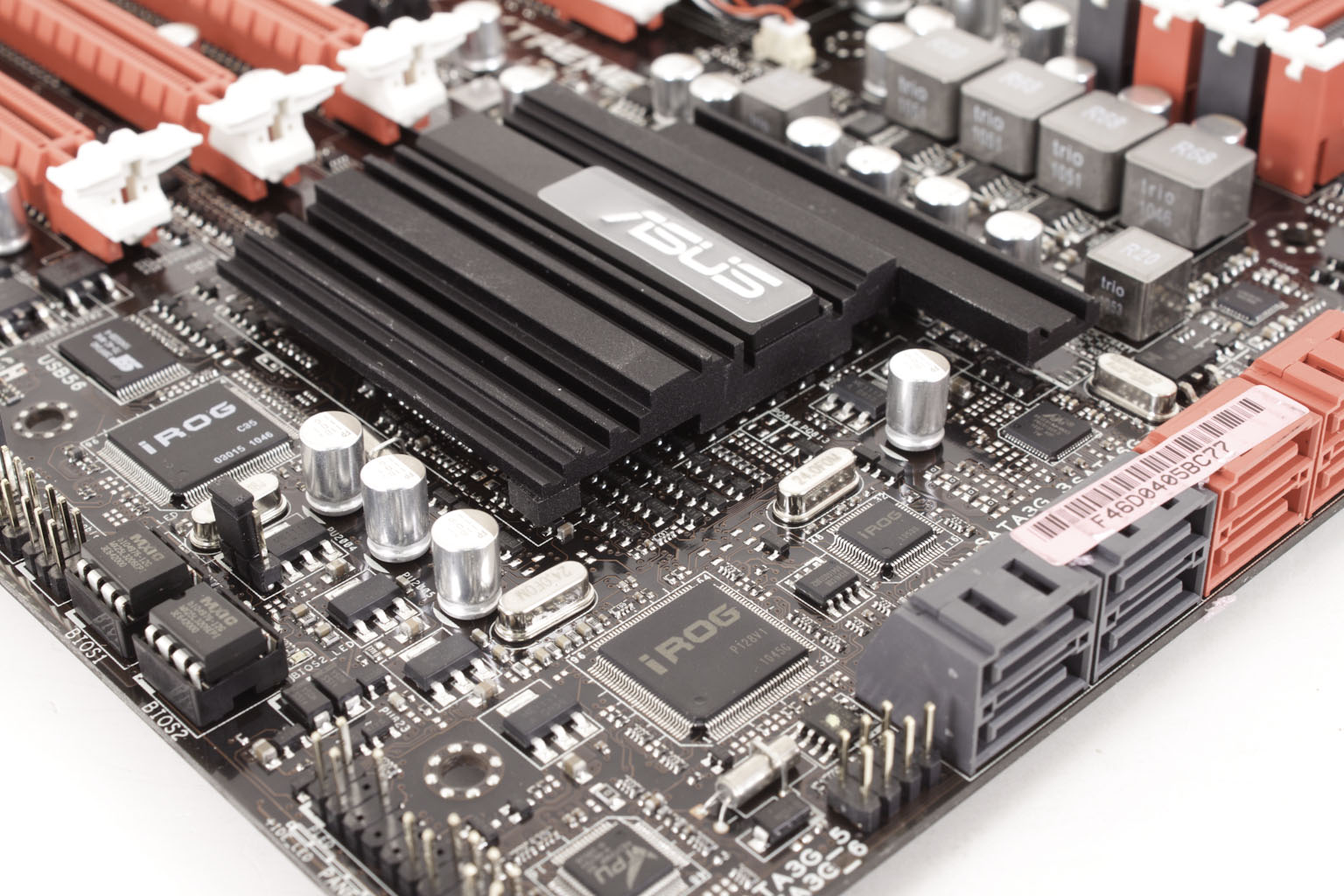 |
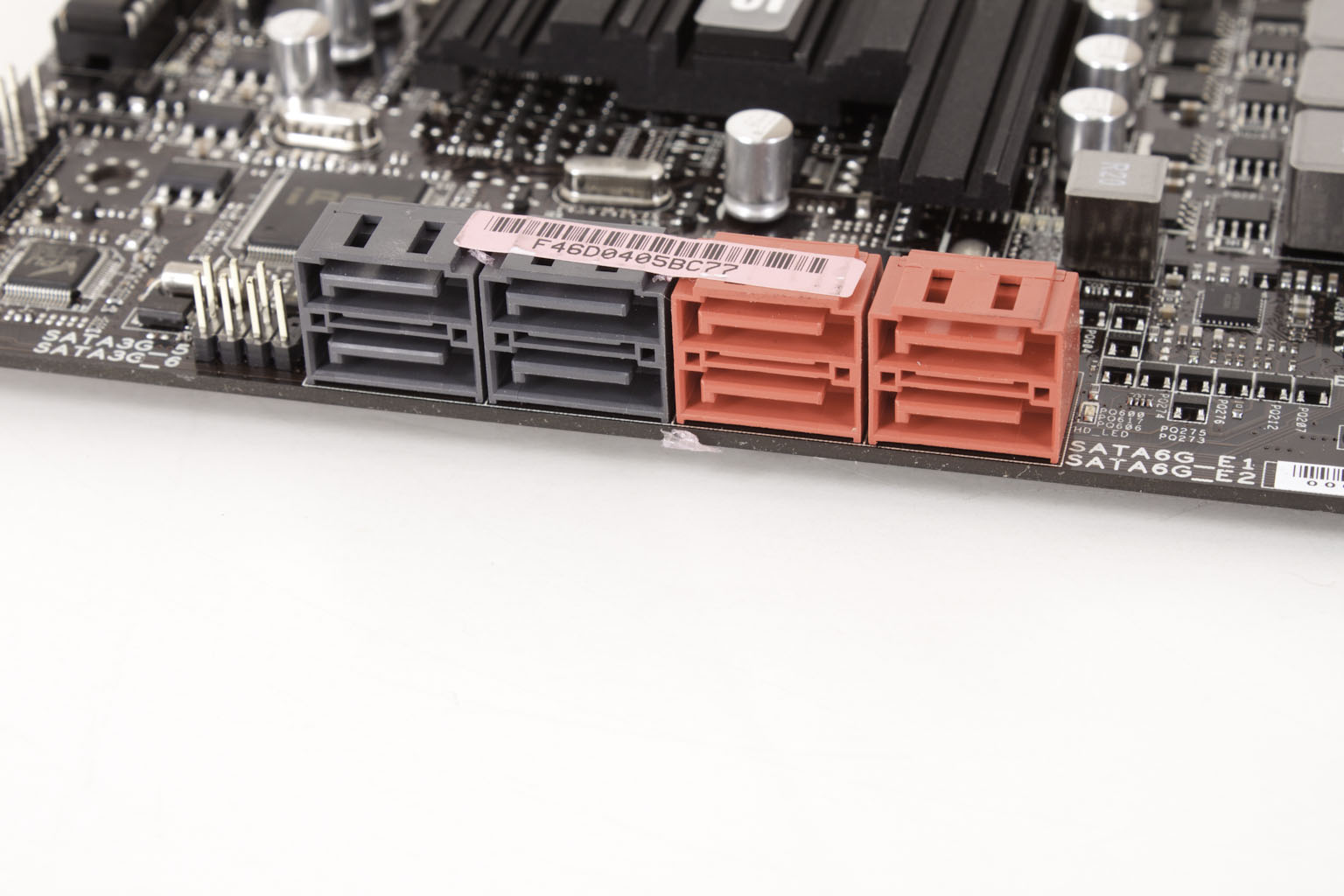 |
Moving to the I/O ports we find the eight USB 3.0 ports that we told you to expect. These are all branched off of the same USB 3.0 controller through the VIA USB 3.0 hubs. The Dual Intel NICs are a nice feature as is the USB port for the ROG Connect and… well most of the other items on the back. The one that is probably the least interesting is the typical onboard audio. This board is certainly a place for a Xonar audio card.
All in all Asus has made some great design choices in the Maximus, in fact some of these are better than what we have seen in the Rampage lineup. I am more than a little surprised in this considering the fact that the Rampage is their top end line (even now with the X79). Now we need to see just how well it performs under pressure.
Features -
In the current market motherboard (and indeed almost all component) performance is very close. The days of a large performance advantage between boards using the same chipset are long gone. That is unless someone makes a HUGE mistake (like runs traces completely wrong). Now, the thing that differentiates different products is the features. These are things like power management, extra slots, better audio CODECs etc. It is these items that R&D teams work so hard to drop into what are really identical pieces of hardware at their most basic level. One thing about Asus that might not come across when I write up the features list is that Asus loves little add-in features. They are pretty much everywhere. Even some of their features have features; it is one of the things they are most proud of. I have talked with them on this subject before and one thing was abundantly clear; Asus wants to make sure their products stand out from the crowd. I am not just talking about the high-end products like the ROG line, but all of their products. This has led to the misconception that when I do not talk about the Q-Connect, or Q-Fan, or the AI tuner, or any number of items that I am not aware of or do not feel they are good items. The same is true when I call them “floor mats”. However, that is not the case. What has happened is that Asus has made these features common across all of their products. Now if you buy an Asus board you are expecting to get an Intel NIC, Q-connector, Q-Fan, AI Tuning, EPU energy saving, etc. These items are almost implied when you see the Asus name. So if I miss an item or list it in the floor mats section it is only because it is an “Asus Standard” item.
Moving on from that let’s dive into the features that really make the Maximus IV Extreme really stand out even amongst its peers.
Excellent -
Proadlizer Decoupler
Dual Intel NICs
Excellent trace tuning
Tri SLI support with the NF200 chip
Great cooling design
ROG Connect (remote overclocking)
These items will make the Maximus truly stand out from others in the lineup (and the competition) The NEV/TOKIN Proadlizer is sure to help push the Maximus to some impressive speeds without the fear of signal distortion. When you combine this with the trace tuning we see on the board there is no telling how fast we can get this to go.
In the middle (sort of good) -
Voltage Read points
PCIe kill switches
Dual BIOS
LN2 switch
10 USB 3.0 ports
Bluetooth module (Asus was doing this before Intel picked up the idea)
Features like the Voltage read points and the cables add value to the Maximus and also give it a slight edge over other boards in its class. In many cases these will mean the difference between being bought and being put back on the shelves.
Floor Mats -
Q-Connector
Q-Fan Profiles
Multiple fan headers
On-board power and reset controls
Now while these are listed as floor mats here it is only because they are items that you would expect from Asus and from a board in the ROG line. It is not because they are boring or not of any use it is just that they are going to be on almost any board from Asus and especially on an ROG board.
For a full listing of features you can check out Asus' Website
Conclusion –
One of the things that I have always loved is figuring out the logical design of a product and then identifying the whys for the choices made by the manufacturer. IN many cases the motivation is simply cost. In others you can say it is the desire to make the best product. In Asus’ case (and especially with the ROG lineup) it seems that the R&D team is looking to find the best combination of performance and features while also balancing the delta between stock and overclocked performance.
Discuss this in our Forum



